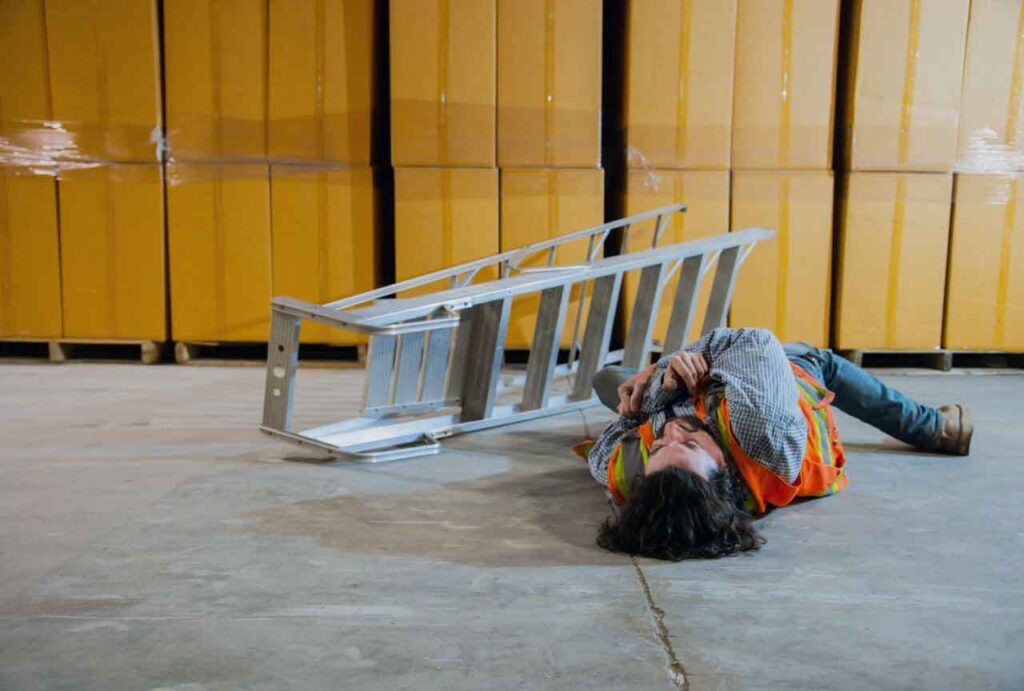Workplace accidents not only pose an immediate threat to employees’ well-being but can also lead to significant indirect costs for businesses. Beyond medical expenses and compensation claims, these indirect costs can have a substantial impact on an organization’s bottom line.
So let’s explore what is considered indirect costs for workplace accidents and why businesses should pay careful attention to them.
What is an indirect cost of workplace accidents:
Indirect costs for workplace accidents refer to the financial consequences that extend beyond the immediate expenses associated with treating injuries or compensating affected employees.
Unlike direct costs, which are easily identifiable and often involve medical bills and compensation payouts, indirect costs are more intangible and can significantly impact a business’s overall financial health.
These costs encompass a range of factors that influence productivity, efficiency, and the general well-being of the organization, contributing to a broader economic burden.
Understanding and managing the indirect costs are crucial for organizations seeking to create a safer workplace and protect their financial stability.
10 examples of Indirect Costs of workplace accidents:
The following are considered indirect costs for workplace accidents:
1. Increased Insurance Premiums:
Following workplace accidents, insurance providers may raise premiums for workers’ compensation coverage, impacting the company’s budget.
2. Legal Fees:
Dealing with legal aspects after an accident involves expenses for legal counsel and potential lawsuits. These costs contribute to the financial burden on the company.
3. Overtime Expenses:
To compensate for reduced staffing levels, companies often incur additional labor costs. This may involve paying overtime to existing employees or hiring temporary workers to cover the workload.
5. Workers’ Compensation Claims Management:
The administrative costs of processing and managing compensation claims add to the financial impact of workplace accidents. This involves hiring professionals to handle paperwork and ensure compliance.
6. Morale and Reputation Impact:
Workplace accidents can negatively affect employee morale and the company’s reputation. Reduced job satisfaction and loyalty, along with potential harm to the brand image, are intangible costs.
7. Training Replacement Workers:
Bringing in new employees to replace those affected by accidents incurs costs for recruitment, orientation programs, and the time spent by supervisors on training.
8. Productivity Loss:
When employees are absent due to injuries, it can disrupt workflow, leading to temporary or prolonged work stoppages. Reduced efficiency and output contribute to lost productivity.
9. Investigation And Administrative Burden:
Workplace accidents increase the administrative workload. This includes the time spent on incident reports, processing insurance claims, and communication with regulatory bodies.
10. Equipment/Property Damage:
Accidents can lead to damage to equipment or facilities, necessitating repair or replacement. The associated costs impact the company’s budget for maintenance and upkeep.
These examples highlight the diverse nature of indirect costs for workplace accidents, both tangible and intangible, emphasizing the multifaceted impact on a company’s financial landscape.

Strategies for Mitigating Indirect Costs:
Effectively managing indirect costs associated with workplace accidents requires a strategic approach. Companies can implement various strategies to mitigate these financial implications and foster a safer work environment. Here’s a detailed exploration of key strategies:
1. Regular Safety Audits:
Conducting routine safety audits allows organizations to identify potential hazards and address them promptly. Proactive measures prevent accidents and subsequent financial repercussions.
2. Legal Compliance:
Stay updated on safety regulations and compliance requirements. Adhering to legal standards reduces the risk of fines and legal expenses associated with workplace accidents.
3. Investment in Technology:
Embrace technology solutions that enhance workplace safety. This includes IoT devices, monitoring systems, and safety software that can detect and prevent potential hazards.
4. Comprehensive Safety Programs:
Investing in robust safety programs helps prevent accidents. Regular safety training, hazard identification, and clear protocols contribute to a safer workplace.
5. Strategic Insurance Planning:
Collaborate with insurance providers to strategically plan coverage and manage premiums. Proactive discussions can help in negotiating favorable terms and identifying cost-saving opportunities.
6. Employee Support Programs:
Provide support programs for employees affected by accidents. This includes counseling services and rehabilitation assistance, fostering a supportive workplace culture.
Implementing these strategies collectively creates a comprehensive framework for mitigating indirect costs associated with workplace accidents. Proactive measures not only protect the financial health of the organization but also prioritize the well-being of its most valuable asset – the workforce.
The Importance of Risk Management for a safer workplace
Effective risk management is a cornerstone in navigating the complex landscape of workplace safety and mitigating indirect costs associated with accidents.
It involves a systematic approach to identifying, evaluating, and addressing potential risks to prevent adverse consequences. By proactively managing risks, organizations can create a safer work environment, reduce the likelihood of accidents, and consequently, alleviate the financial burdens linked to workplace incidents.
The importance of risk management in mitigating indirect costs lies in its ability to transform safety from a reactive approach to a proactive and strategic initiative.
By systematically addressing potential risks, organizations create a resilient foundation that not only safeguards against financial ramifications but also fosters a culture of safety and well-being among employees.
Conclusion:
Beyond the immediate impact on individuals, the indirect costs of workplace accidents extend to various facets of an organization, going beyond the visible expenses, reaching into the core of an organization’s sustainability.
The pursuit of a safer workplace not only protects the workforce but also positions organizations as responsible contributors to their communities.
By embracing comprehensive risk management practices, companies can create environments where employees thrive, accidents are minimized, and the substantial indirect costs associated with workplace incidents are significantly reduced.



